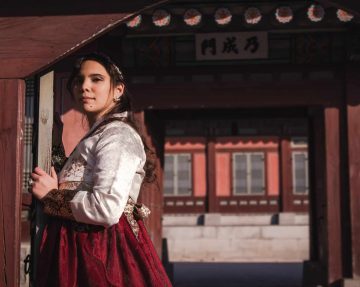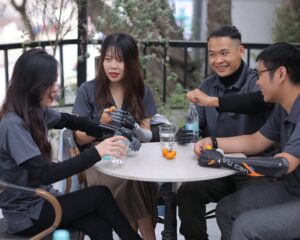Happy Asian American, Native Hawaiian, and Pacific Islander (AANHPI) Heritage Month! Too often, I’ve found the celebration of this month to be too narrow: too focused on Asians of certain origins, too exclusionary towards mixed-race people of Asian descent like me, and too ignorant about the unique histories and experiences of Native Hawaiians and Pacific Islanders.
Just as AANHPI history is an important part of the history of the Church of Jesus Christ of Latter-day Saints (LDS Church), AANHPI contributions are crucial to the Church’s past and present. Look no further than iconic Chinese-Japanese American Melissa Wei-Tsing Inouye for proof that our community needs AANHPI members and their talents and perspectives.
I’m going to take this opportunity to share with Exponent readers just a few stories from AANHPI Mormon history and culture, but I hope May isn’t the only time you dedicate to learning about Asian Americans, Native Hawaiians, and Pacific Islanders. Please keep in mind that these are just a few snapshots of an amazingly diverse and varied group of people (that make up about 60% of the global population)!
I have to start with an example about South Korea, since my mom is Korean (and I put a hanbok – Korean traditional dress – photo of myself from Korea as the image for this post). One fun fact is that the LDS Church only entered the Republic of Korea (ROK, i.e., South Korea) because the ROK President sent someone to the United States to learn about nutrition and agriculture. That man was Dr. Kim Ho Jik, and he decided to join the LDS Church while studying at Cornell and learning about the gospel from his colleague Oliver Wayman. He was baptized near where Joseph Smith was baptized, and as he emerged from the river after his baptism he heard a clear voice saying, “Feed my sheep.” Once he returned to Korea, Ho Jik worked with LDS American military service members to teach the gospel. He also later secured approval from the ROK government to allow LDS missionaries and paved the way for generations of Korean members after him.
Another less well known example from Korea I just discovered while confirming details about the famous Dr. Kim Ho Jik for this post is that of Sister Ho Hee Soon: “She began doing temple work in her 80s. She performed endowments for at least 1,500 people. In 2007 alone, she performed vicarious ordinances for more than 600 people. One American painter, touched by her service, painted her portrait and donated it to the Seoul Temple to commemorate her unceasing efforts to help save souls.” You can read more about Sister Ho Hee Soon, Dr. Kim Ho Jik, and other Korean members who made irreplaceable contributions to the Church in “The Church in Korea,” an article by Church history advisor Hee-Chul Seo. (Note: Korean names are traditionally three syllables, with the first syllable being a family name and the next two syllables forming the given name. The reason why I keep this convention with the historical figures but not with the Church history advisor is because I have copied how their names have been presented online. I’m a big fan of using whatever naming convention for people that the people themselves prefer.)
One example of a Native Hawaiian LDS founding member we should all know more about is Kaleohano. He was one of the first people George Q. Cannon converted and baptized in Hawaii, and he was a crucial missionary and advocate for the young church on the islands. When Kaleohano’s first child was born, a daughter, he was so thrilled he gave an “exuberant” sermon for two hours the following Sunday! When Walter Murray Gibson became head of the Church in Hawaii in 1861, Kaleohano worked with him at first but soon withdrew. Multiple Hawaiian members (the historical record seems unclear whether Kaleohano was among them) expressed their concerns to Church leadership and Gibson was ultimately excommunicated for practices like charging members for membership and priesthood offices and then embezzling funds (not to mention forcing Hawaiian members to crawl on their hands and knees in his presence). Kaleohano became a trusted intermediary between the Church and Hawaiian royalty: King Kalākaua and Queen Kapi’olani. I encourage you to read more about Kaleohano and other Hawaiian LDS members like Jonathan Nāpela online yourself or to share these stories with your Relief Society group or in your Sunday meetings.
I’ll conclude with a Pacific Islander story: that of the second-generation Tongan American family music group The Jets. They so skillfully mixed Polynesian dance and acoustics with trends from the American Top 40 (AT40) that they finished three world tours and released five songs that hit the top ten ranking on the Billboard Hot 100. They performed at the World Series and the Summer Olympics in Seoul. The band fell apart later with some legal and financial conflicts, but the story has a happy ending since the group came back together and ultimately put family over profit. You can learn more about that in this LDS Living interview with Moana Wolfgramm Feinga, the youngest member of The Jets. You can listen to their music and enjoy a blast to the past (specifically the 80s) on their official YouTube channel. Maybe you can give them a listen during your next Family Home Evening.
I hope you learned something from this post and you’re inspired to learn and share something about AANHPI history or culture with the people in your life. Let this post just be a starting point, and if you know any more amazing Mormon AANHPI stories then please share them in the comments below!
Don’t miss the next issue of Exponent II’s quarterly magazine! Subscribe here.






2 Responses
My friend of many years is part Korean and LDS too. I think the Korean culture has so many things to offer us – like how to avoid shame about our female bodies by going to the Korean spas where the women and girls are all undressed together, and it’s totally fine! Girls get to see women’s bodies throughout their entire lives, and it normalizes what real women look like as they age and have babies.
I’m jealous of the confidence and peace with their bodies this must bring Korean women. I do not feel like we have that in Utah and in the church. Help us, Korean friends. Can you plan our next Enrichment Night and take us to a Korean spa together? 😅
I’ve done some reading about the early history of the Church in Hawaii and Walter Gibson – it’s a wild story. Gibson was much more interested in being an adventurer than a Mormon and only pursued Mormonism inasmuch as it helped him adventure and colonize throughout the Pacific. He even tried to convince Brigham Young to abandon Utah and try to settle in Papua New Guinea instead – imagine what life would’ve been like if that came to pass. After Brigham Young entrusted him with Church property in Hawaii, he embezzled almost literally all of it, including an entire island! Because he stole all the land that the church owned, they had to buy land in a different location which later became Laie Hawaii, where the first hawaiian temple and BYU Hawaii is. Once it was discovered how out of order his behavior was, he was excommunicated and he later became the last Prime Minister of Hawaii.